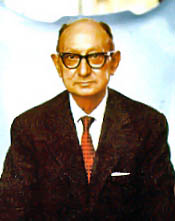Difference between revisions of "Ugo Zagato"
m |
m |
||
| Line 1: | Line 1: | ||
{{X}} | {{X}} | ||
| − | [[Image:ugozag12345.jpg|thumb| | + | [[Image:ugozag12345.jpg|thumb|200px|right]] |
'''Ugo Zagato''' ([[June 25]] [[1890]], [[Gavello]] - [[October 31]], [[1968]]) was an italian automobile designer, known for establishing and running the [[Zagato]] coachbuilder, famous for its lightweight designs. | '''Ugo Zagato''' ([[June 25]] [[1890]], [[Gavello]] - [[October 31]], [[1968]]) was an italian automobile designer, known for establishing and running the [[Zagato]] coachbuilder, famous for its lightweight designs. | ||
Revision as of 15:35, 13 April 2009
Ugo Zagato (June 25 1890, Gavello - October 31, 1968) was an italian automobile designer, known for establishing and running the Zagato coachbuilder, famous for its lightweight designs.
He had five brothers and lost his father (1905), forcing him to emigrate to Germany and metalworks employment in Köln (1905). He returned to serve in the military (1909) and joined car coachbuilder Carrozzeria Varesina in Varese, while studying at the Santa Maria design school.
During World War I he moved to Torino and joined the Pomilio aircraft manufacturer, learning lightweight bodycrafting (1915-1919). He established Carrozzeria Ugo Zagato & Co., a workshop in Milano (1919), where he built close ties with Alfa Romeo.
His workshop was destroyed and rebuilt as La Zagato outside Milano after World war II, joined by his sons Elio Zagato (born 1921) in 1946, and Gianni Zagato (born 1929). His sons continued operations on Ugo Zagatos passing (1968).
Awards
- Compasso d'Oro 1960 for the Fiat Abarth 1000
